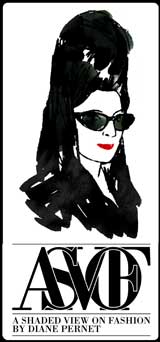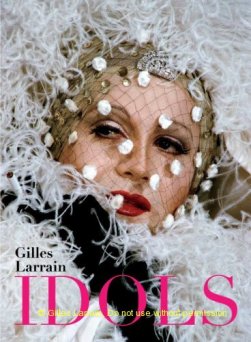A Shaded View Of Fashion
Saturday, 07 April 2012
Gilles Larrain, an interview
By Silvia BombardiniDear Shaded Viewers and Diane,
It was a real joy and honor for me to have the opportunity of this inspiring digital conversation with Mr. Gilles Larrain. His just republished iconic book Idols was being celebrated with a very successful exhibition at Steven Kasher gallery in Chelsea only a few months ago, and through the fascinating medium of his wife Louda, Mr. Larrain told me about New York and the 70s, his charming birds of paradise, the intimate world of painting and his own childhood and how to seductively capture souls on kodachrome films.
S.B.: Could you tell me about your decision to reprint the book today? 38 restless years after its first controversial, pioneering release, its characters have truly become those Idols your title perhaps not too unconsciously predicted back then. Symbols of courage and commitment in a fight for freedom and rights that would inflame the world’s streets in the following years, as well as emblems of that daring, young, hedonist New York art scene whose unlucky fate took part in the establishment of the legend. How much of it would you say it’s true, how much myth? Do you believe your photographs contributed to the idealization of your models?
G.L: Well the book was republished almost 40 years after but when the first book came out, first of all it came out just like that. I photographed all these incredible birds of paradise and all the creative fauna that I could find in New York at the time.. I photographed them because they were just outrageous, and amazingly different, and daring. And Zoom did an article, prior to the book Idols in 1972 in January, 26 pages on the cover of Idols subject. Why to republish? Because a young photographer found.. Ryan McGinley found this book not only controversial but inspiring and a source of information for him and he came to interview me for Vice magazine and that created a revival of the project. Then Powerhouse came and asked me to republish the book and we did. And now we just had a show at Steven Kasher gallery in Chelsea, with my wife Louda in the back room.
How much of it would I say it’s true, how much myth? There is no real boundary between myth and truth in this case, it’s both at the same time. Myth reinforces the truth and truth reinforces the myth. They were trying to find their style, their presence, they were experimenting. They came back for one more session, it was like a place you go to remake your persona as you may go to a psychiatrist or a psychologist or advisor for guidance, discovery. There were many reasons why these people came, once the place was safe for them to come they needed to come, that was why the book came out, it was something that had to be presented to the population at large. And it was not very well-received here at the beginning. The book was not accepted by many layers of society, even some of my clients, in business, quoted “proper society”, found the subject outrageous at best, insulting and dangerous at worst. It wasn’t always an happy time, but we kept on doing it, as it was my belief that the subject was not only interesting but it had to be revealed, it and to be presented and photographed. And about the idealization of models, they don’t need to be idealized, they are themselves. They find their own persona, their own arena, their territory, to create their dreamlike, phantasmagorical presence. It was creating their own reality, that’s exactly what it was. A reality that was not realted to the reality of society at the time, and even today, it still lives in societies that are very separated by religion, race, color, faith, language, whatever.
Downtown New York at the time was this place that was in limbo, there were places where we could have lofts here, so available, so cheap and so big and where you could have your experimentations, your laboratories and playgrounds, swimming pools of ideas. It wasn’t for business, none of these was for money, it wasn’t a purpose to photograph this for magazines as it is now, it was a different time. We were looking for directions and experimenting and Max’s Kansas City was a place where everybody went, it was the only place at the time where all the art scenes could mix together without having geniuses and superstars, no Lady Gaga and none of this garbage that is now polluting the minds of people. It was an open place where people were real people, very creative, and we got together in my studio to make creations of the days that weren’t the common outfits in the streets, people were interested in that at the time. It was underground. It wasn’t something like what now is fashion, and tattoos and piercings, people of course pierced their ears but..so it was a fresh moment. New York was going through huge changes, Gerald Ford the president came to New York at one point in ’74, because New York was in default, financially. He said to New York “drop dead”, the president of America. But New York at the time was a city that many people found like Sodom and Gomorrah, a negative place. There was a resentment of New York in the south, at the time I was working for the French television so we travelled, and New York was not the shining city of the mountains, it was a place of chaos. Of course the stock markets and Wall Street were in New York, and those were powerful financial engines that kept New York going, but not intellectually..and these people that came to my studio, the Cockettes and my Idols, I called them Idols because they were. They were out of the norm and they were some sort of in the light of the presentation of their style, their direction. This was prior to AIDS, the fear of AIDS came in the 80s, these were the 70s, we began in 1970-1971 and for about four years we kept on doing these photo sessions at the studio. New York was a place where there was freedom, in a way. Because it was not such a real estate money-grabbing city as it has become now. It used to be a bit so also then but less than now, and then there were areas completely out of this, there were gangs in this village and Soho was a hole. It was black, with no lights, there were no stores and nothing was painted, there were warehouses, abandoned many of them, where we could buy billings for nothing, we bought a billing here for a very small amount at the time, now it’s untouchable. So everything has changed, and I think that Idols, these people brought some kind of fresh perspective to a lifestyle that evolved and fashion came out from those people there. They were creative. These people were the ones that created fashion, created movement, created the New York energy. And many of them are no longer here, many of them died, but at the opening there were a few friends that were there, and they were the courageous protagonists of this change and now are in fashion, all these things, gays, transvestites, bars, cafés, fashion shows..but they were the pioneers and they were courageous.
Myth and truth were parallel indeed, they were hand in hand. Because when you create a style and this is presented, as such it becomes reality. The myth is in the making of it, once it’s been discovered and presented and repeatedly presented it becomes reality. Like fashion. The first miniskirts you know, everybody was shocked by them, I mean, you could show your legs? You know in Arab countries they kill you for that. If you show your ankles, in many countries you could be lapidated. So in the sixties with the first miniskirts, you know, now everybody has shorts and you can show everything, so there’s this evolution, what fashion has done is changing the moral views on things. So the myth and reality, they go together, they are the two sides of the coin.
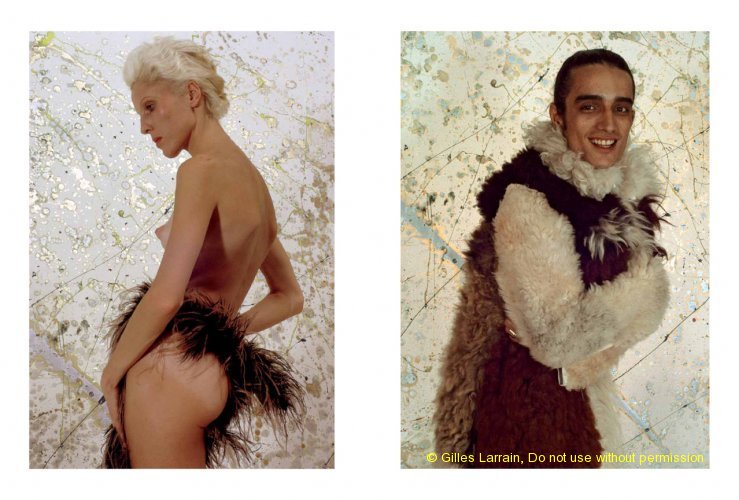
S.B: We see in your portraits audacious, intriguing figures, and we can’t help but wonder what kind of life they had, and where their flamboyant appearances led them today. But it’s their souls what you really are showing there, and looking carefully we perceive them, just behind the glittering powders and gleaming, gaudy attires. Their hearts which have known pain and yet won’t give up on hope, that are challenging despite fear and relentless in their vulnerability. Do you understand people better once you photograph them? Do they reveal something to you that they keep from us?
G.L: I could say yes and no and something in between, there are many different aspects of the question. Shooting a portraiture is a very careful exploration of a persona. Yes, you discover people and that’s why I photographed them. For me taking a photograph is asking a question. And if I’m taking a portrait or a picture of somebody, my question is “who are you?”, and if not at the moment of taking the photo the answer is built-in suddenly for me later when I look at the photo. When I’m in the dark room, processing, I look at the image, and I see a lot of reality. And I have maybe..one aspect of my, I won’t say talent because it’s a word I don’t really know what it means, one of my capacities on potential is to make people comfortable enough to trust that they can be genuine in front of the camera. Because what I’m after is not the fashion, I’m not a fashion photographer even though people say that because I do photos that look like fashion, I’m interested in the landscape of the person, of the soul, deep down, not just the make up. And sometimes I think I’ve achieved to get good moments, touching.
It’s difficult now to describe the multiple layers that I involve in the process of photographing. When somebody come here, and he’s resistant, so to say, to spontaneous exuberance, and uncertain about the territory that he’s entering so a bit distant and careful, there is lot of seduction you have to do to get him to come to you, to surrender to you. And that requires a lot of intuitive things, a good nose to feel what’s happening, to understand a person, understand a moment, what can trigger a change. I think that a good photographer should have basically a very sound intelligence to guide him, like a GPS, that tells you where you’re going, what the road is like, what’s your goal, how you can get there. Intelligence also is doubled with intuition. These are requirements really, for a very incisive photographer to be able to penetrate layers, the seduction is part of that. Intuition, intelligence, timing. Eventually, it’s a wonderful thing to get from a no connection to a good connection, and it could take hours.
The human condition is such that everything goes in tandem you know. Fear and joy, pain and pleasure, questioning and affirmation, we have this duality, we are created, we function, we are structured by duality. So of course there is pain in the fact that you are different, that you don’t fit in a society that wants you to fit, you come from a family where your mother would have liked you to be a doctor, a lawyer, a dentist, an accountant, a politician, an engineer, while you’re going to be an artist, you’ll starve. You know, at the time the art world was not something that you went into as a profession, there wasn’t this market based in Miami, all the galleries and millions of dollars for a photo, this is becoming merchandised. That was the beginning of a movement, they were there trying to know who they were, they didn’t have an opinion, a preconceived opinion before they made up. And the camera, and the photos were the realization of their experimentation, their attempt at reaching something could be verified on the image, on the kodachrome. So that’s why they came afterwards to look at the kodachromes. So they knew the photos, some people liked the book, some people did not like it. Some people were happy with their photos like John Hayes, he was a very frightening dark, kind of scary Halloween image of a mask, a very dark figure, a dark angel, and he had this tattoo on his face that in the 70s was very rare. Those people were really pioneers because they opened the doors to possibilities, that are now accepted as trendy fashion styles. They created an idea which is now everywhere consumed by masses. This was 40 years ago, 40 years is a long time, especially now that things change so fast. Every five years all computers change, 40 years ago there was no computer, can you imagine that? There was no digital camera, everything was made in film, which was costly, film was expensive to process and kodachrome is a film that needs a special lighting, you had to do the right thing, you had to be technically a good photographer. Now everybody can take photos, you don’t need to worry about the lighting. But it’s like in movies, a movie about the 50s or 60s tells you something about the time but it could not tell you the reality of the time, what was the truth in all the Marilyn Monroe mythology? She died, she was depressed, she had a sad life and she was an amazing beautiful woman, close to the president but up and down. The same thing for these people. The human sensitivity overboard, and their joy was to find themselves and discover if they could do something else than just be average, they wanted to escape the idea of being average. They wanted to be birds of paradise, wanted to fly with feathers of all colors, and be noticed in the sky “wow, look at that bird”.
About where their flight led them today, we witnessed that process. At the opening we had the chance to speak with Lotta Love, Joaquin La Habana came from Germany for the opening, they are still flamboyant, still full of bizarre and energy, still proud of being the subjects of the Idols books 40 years later. And he’s still performing in Germany, still keeping his career alive from the beginning. And it began doing it back then, the dancing, and he came for many different photo sessions, maybe 20 different photo sessions. Some of those who survived became very serious, like Lotta Love, I’d even dare to say, a bit conservative. His name is William Scott, a very articulate and wonderful person, and then it was maybe the beginning of something, he was very young. And so was Harvey Fierstein, only 19, the first time he really begun to play along with his fantasies, and transvestites, exploration. They grew from that point on. Each one of them is different. Even though they came together as a group each one of them was very independent from the others. It was like a sea. You had sharks, you had turtles, small fishes, big fishes, whales, all very different characters, and they got together in the studio, as they would get together in a playground, or a laboratory, where they could create together, but independently. They were not copying each others, there was a big sense of independence and personality and a sense of self. Now people try to identify, and accumulate the elements of recognition to adapt to a common vision of somebody. Those were different times, that’s why they were exploring, why it was a beginning, now people follow, they were leading. They were fabulous times because everybody was very articulate in their humor, in their presence, they were creative people, they were artists so it was a fantastic bunch, it was a real wild bunch. I don’t see anything similar nowadays. We do things here, but we don’t have that energy. It’s no longer the time. Now it’s about production, technique, efficiency, marketing, money. At the time it was just, pure fooling. Like the Marx Brothers in a way, you know. Completely whacko but so brilliant and so surprising, like exploring a road with many many turns and at every turn something new appears, and you could not predict the future. You could not predict what the next photo session would be like. It wasn’t routine. Many of them didn’t go beyond that, they stayed there and became superstars, you know, Holly Woodlawn, Harvey Fierstein, people like that. And somebody continued to live like Joaquin La Habana in Germany, doing this, singing and doing what he was doing back then with no audience. The audience were the artists, they weren’t doing that for an audience, they were doing that for themselves. And I think I provided a space where they felt very comfortable, where they felt they were not judged, they were not analyzed or criticized. Sometimes I said “No this is ridiculous!” but it was very funny, it was a creative back and forth. Those were the days. But that’s life, the planet changes, there were dinosaurs at one point in here. They were amazing animals, I wish I had seen one, I dream sometimes about dinosaurs, because they must have been incredible. Incredible sizes, on that planet here, and now we have mosquitoes instead.
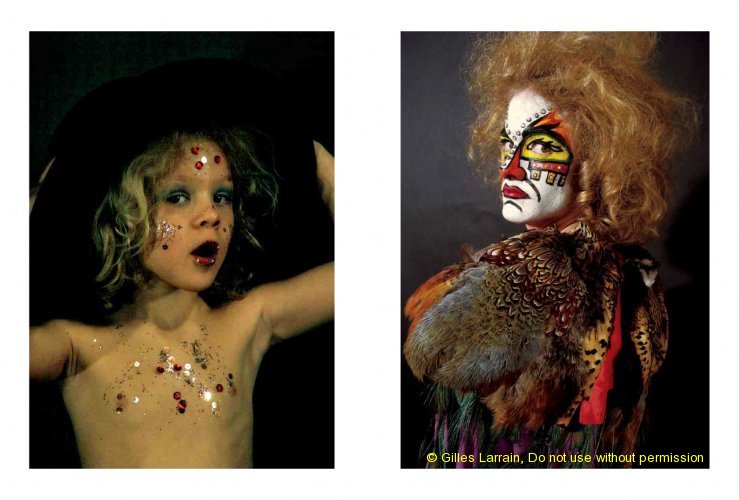
S.B.: In front of your camera, your characters reveal both who they are and who they would like to be. It’s your contemplative, beneficial look, free from psychology or judgments, that allows them to open up. There is a charming mix of allure and wish, a tension between a present beauty and the projection of it. The fashion designer Yohji Yamamoto once said he finds perfection ugly; could you tell me what is, as an artist, your idea of beauty?
G.L: It’s an impossible answer. It’s a curious question, the idea of beauty. My idea of beauty would come actually from the past, from the fact that my parents were collectors and painters and musicians, collectors of antiquities. Beauty exists all over the planet, from the animal world to the landscapes, to the bodies. The ideal of beauty is whatever is surprising enough to make you excited about looking at it. To give you a desire, like smelling a beautiful flower, to smell it again, it’s something unique, it rouses all the senses, one sense is linked to all the senses, and especially is linked to imagination. Beauty is what triggers imagination, and what triggers desire. Whatever that may be. My photography is a reaction to the provocation of beauty, whatever that may be. And what’s beauty for me may not be beauty for you, or for somebody else. You may see a rusty piece of iron, that looks like a truck, and see “oh a racing car”, you know, that’s your beauty, you can say that.
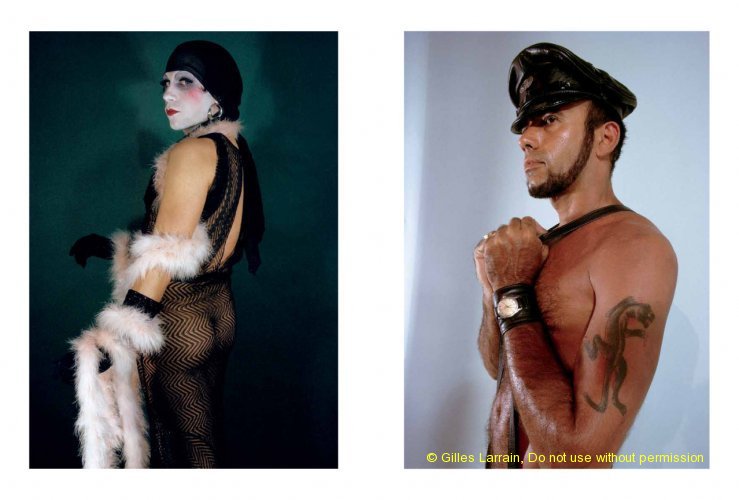
S.B.: The mastery of lights and familiar background, the profuse make-up, the vibrant fabrics wrapped all around steady silhouettes, your portraits could seem carefully studied paintings, perhaps reminding of the Fauvism movement in their overwhelming, vivid shades and their even but subversive force. Having been a painter yourself could you tell me if you had any influence, and why did you eventually choose to turn to photography?
G.L: I chose photography because I am lazy. And I could reach, photographically, a higher distraction, from the provocation of beauty, than I could do by painting. Even though I did paintings, quite a lot of little paintings that I did like and love because I felt like a baker making croissants, but every croissant was my croissant, a unique croissant. And it was a small, still life painting, kind of primitive, Flemish tasting, classical, whimsical, humorous, still lifes of fruits, baskets, candles and eggs and apples cut in halves. They were symbolical, maybe a bit erotic, of container, content, penetration, all this stuff, those symbols. And painting was for a while my real joy, and when I discovered photography I felt about painting, that I did that already, and I wanted to explore another continent, you know. It was a different medium, that gave me different references, different imaginations, directions, possibilities, and way faster than painting. With painting I had to wait, I used to paint with a lot of textures, and oils and varnish, and they had to dry, I was playing with materials, while in photography I could play with light and it was more direct. And I was more, at that point, interested in people. Painting was a fantasy from the mind, photography was an interaction with people. So it’s like I escaped from one territory to enter another. And I love what I’ve done and I go sometimes to see, when I used to go to France I would go to the home of a friend of mine who bought my paintings, and I enjoyed seeing my paintings on the walls, it was like somebody else painted them of course, like they weren’t mine but I thought they were good, good pieces. So photography yes, it became a more active, more direct, more socially concerned, less arty activity, touching humans more directly. It’s like growing up.
My father was a painter, my mother a painter, and I’ve been around paintings for all my youth and I believe there is in painting this kind of incredible self-indulgence, you create your world and you’re almost protected in its every tower, like an intellectual, or academician in university, your position is protected..this is my view, don’t think its universal. Painters are somehow like children, that enjoy the playground they’re playing in. There is no responsibility outside the painting. A photographer is responsible if he works in society. His responsibility is that what he’s doing is related to other people, a painter is related to his own fantasies, his own territory. He has created his own world and he produces that and he continues in that area. People love it, may pay a huge price for it, but it’s an egocentric, narcissistic work, a painter has that kind of attitude, while a photographer is a social servant, in a way, he depicts society. Painters also did that, good painters like Velasquez, Goya or Rembrandt, because they spoke to their times, they had a function. I believe my love of painting to be attached to Goya, Rembrandt and Velasquez, three major painters for me that I always refer to. It seems to me, that they were actually creating the world of photography. They were giving directions to photographers like me to be able to be socially concerned. Theirs were social paintings, that’s a link between painting and photography that I like, but when I was making my paintings I was creating my little world of symbolism, and surreal things, and primitive. And I was selling them, I was a young kind going to architecture school in Paris, my motorcycle driving to Spain to sell my paintings so that I could provide for myself. And it was a wonderful world. I’ve been very lucky all my life, I’ve always done what I loved, and I love what I do. But I think there is a continuous from the painting of those painters into photography, into Idols for me. I take them as my inspiration.
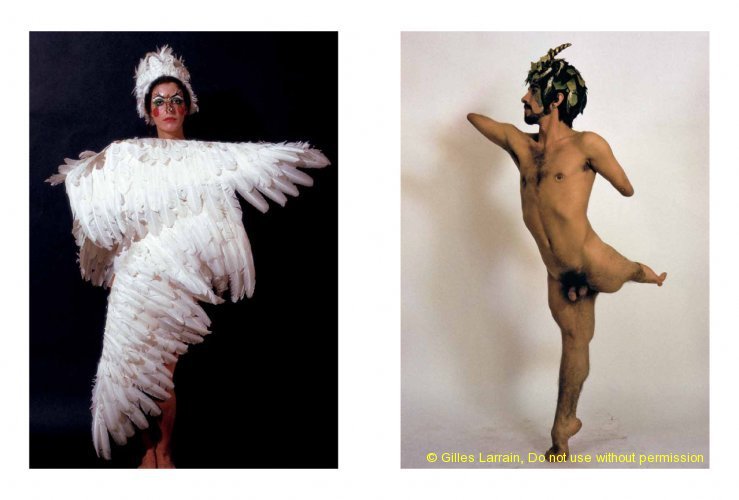
S.B: I read you had boxes of props and clothes in your studio so that everyone could come and dress-up; and at the beginning of your book, one of the protagonists says “When we put on our clothes, we feel free”. It looks as if you gave your models a way to strip their identity search of its usual dramatic nature, and enjoy themselves in the process. How important do you believe fashion could be in the quest for self-confidence, balance and pride?
G.L: Fashion exists in nature, I mean, look at the birds. Fashion is seduction, but now it has become something else, it has become power. It has always been so in high society, if you had a Balmain dress 40 years ago or at the time of Louis XIV, and Versailles, fashion was very important in the court of the king, but peasants had no sense of fashion. But now peasants are involved in fashion, fashion is for the masses now. Fashion used to be only for the elite, now it has become a concern for everybody, it used to be maybe a second concern, now it has become a primal concern. Everybody wants to have a fashionable pair of pants, fashionable shoes, fashionable sneakers, that’s why the trademarks are so important, labels, we’ve become a label-obsessed society, worldwide. There were no labels with these people in Idols, there weren’t designers, they were the designers, they created their own madness, and we had fun doing that, I was part of it.
It wasn’t fashion that they were creating but their presence, how they could sign their names on themselves, how could they be an identity different from others. Now if you’re well dressed, with elegant and expensive things, you’re taken more seriously, people look at you and think “oh, he must be somebody”. At the time, Idols time, 40 years ago, we would go to Max’s Kansas City in rags, and people would get naked in the backroom. They were creating the anti-fashion.
But I’m not against fashion you know, I’m just not happy with the way the consumption of fashion has become, because it actually destroys many things and the consumption, our planet cannot sustain it. The energy to make all this, the packaging. Do you need 50 pairs of shoes? Even people who are not very rich just keep buying and buying. In that area I’m not so happy with the explosion of fashion.
It’s possibly a reaction against to my background too, my parents for example, came from a different world, my father came from an aristocratic family, they always wore silver, ivory..this was the nature of their life, it wasn’t something they were looking for but that was given to them, that was part of what they were, they were born like that. But they were actually very relaxed, they never imposed anything on me, there was an amazing amount of freedom in my family. My father was concerned with his work, he trusted me, he didn’t worry about me. My parents taught me to observe, and to learn. By travelling, by being born in Vietnam, raised in Chile, Argentina, different languages, then France, then back and forth, continuously. Adaptation was a way of observing details. Of course they were elegant, my father was a collector of art, in love with beauty. That other question on beauty is a very complex question. Maurice Girodias, publisher, writer, a friend of mine who used to live here, the last book he was willing to make and wanted me to work with him on it, was a book on beauty, La Beauté Humaine. Through all the cultures, the Africans, the Chinese, to see what beauty is about, it’s so complicated, and so rich. Fashion has been influenced by the people in Idols, I’m certain of it. They influenced somebody like Ryan McGinley, who is a fashionable, in fashion photographer, young, very well received and exhibited throughout the world, and very successful. Idols is a book that he claimed was influential, inspiring for him, because of the people in it. It was indeed a great moment, it was a great moment of celebration, of invention, of madness, of friendship, of getting drunk, doing drugs, discovering everything. I was young, in my late twenties, early thirties, and open for whatever would happen.
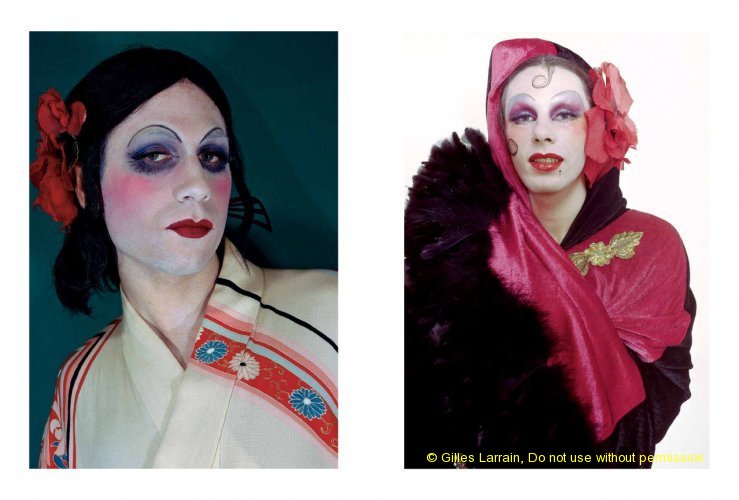
My greatest thanks to Louda Larrain who made this possible.
Later,
Silvia
